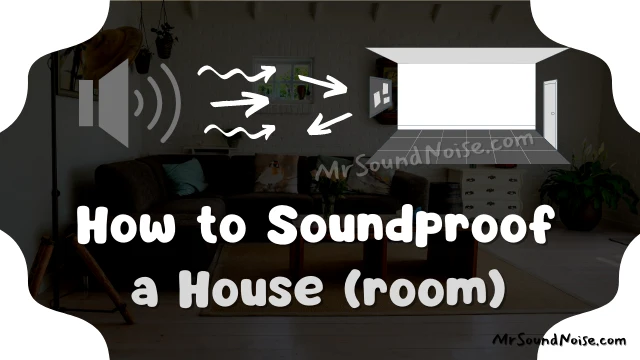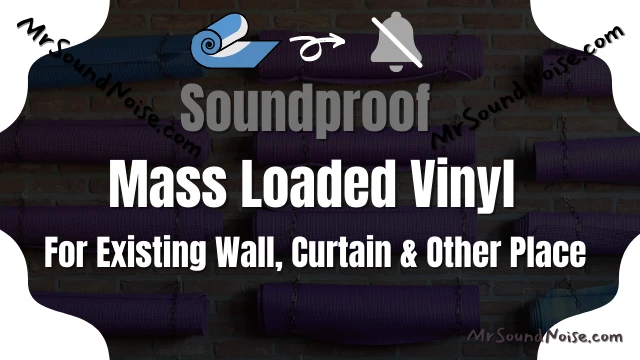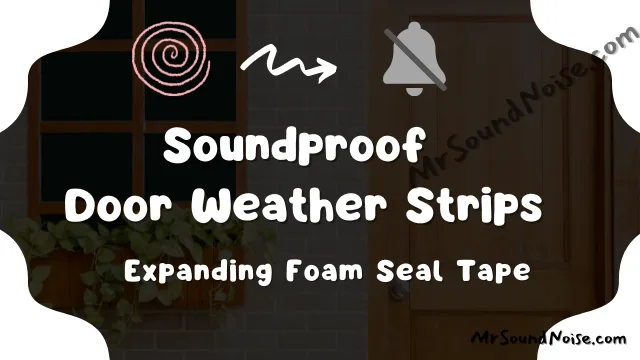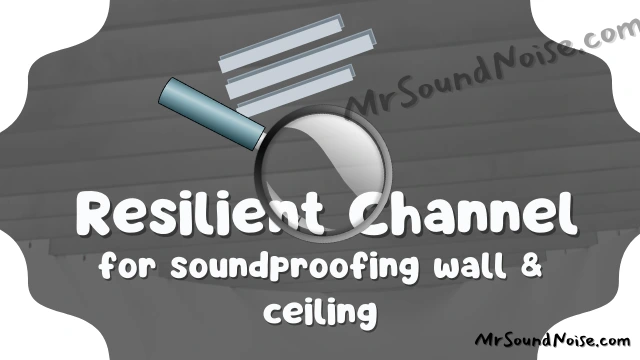
Are you not satisfied with using drywall for soundproofing issues? Do you want more soundproof facilities from the ceiling setting?
Do you want to get an advantage from using soundproofing accessories? If you are serious about getting more extra facilities from acoustic accessories, then I think you have come to the right place for solving your problem?
Yes, in this situation, using the resilient channel for soundproofing can be a better solution for you. Scientifically, you can apply more soundproof settings by using it.
Now, you may have a question about what are resilient channels and how to collect them from the marketplace. Don’t worry. I am telling you about it with a simple description.
If you have some knowledge about it and you don’t also have enough time to find it, then you can use the recommended resilient channel that I have also chosen.
Best Pick: Auralex Resilient Channel
In Spite of having some complicated setup, it is growing popular day by day for the capability of reducing extra sound scientifically.
You can also try to set more soundproofing in the ceiling and wall side. The name of this channel is auralex resilient channel. If you don’t like to use screws to attach it to the wall, then you can use velcro strips in replacing screws.
But my suggestion is that using screws is the best option for attaching this metal channel to the wall and ceiling.
If you apply it correctly, then, of course, you will get more benefit from it. For doing that you need to know the proper instruction with guidelines.
The main function of this channel is a mechanical decoupling method that helps to decrease sound scientifically
Pros
- High-quality material that helps you to stop structural noise
- You can use it with multiple drywall
- Most selling reliable resilient channel
Cons
- If you don’t interest to apply this advanced scientific method, then you shouldn’t collect it
If you really don’t know about this metal strip, then continue reading.
Runner Up RC1 Resilient Channel
Now I am telling you the alternative of the resilient channel. When you can’t collect the best recommended one, then you can try this alternative for noise control of your room.
You can try it as an alternative to solve your problem. The name of this soundproof accessory is rc1 resilient channel. You can also use it in the ceiling and wall section too because the quality is not bad.
For removing direct flow sound, you can use it with drywall. You especially need to reduce airborne sound. So in this situation, you will get more benefit, if you use this channel with actual instruction.
If you fail to set it up properly, then you will not get any benefit from this channel.
Pros
- Resilient channel’s STC rating is high
- reduce airborne sound
Cons
- need proper instruction to set up
What is the Resilient Channel?
A resilient channel is a thin metal long strip and sound barrier material. It helps to keep some gap between drywall and room wall or drywall and ceiling surface.
For this, creating an air gap, any structure-borne noise or impact noise can’t pass through the sheet of drywall. I know, now you have a question about structure-borne noise.
Don’t worry, here, I am also telling you about it and how do these metal strips stop that structure-borne noise?
When a noise wave passes from any material to another material, then that noise is called structure-borne noise (impact noise).
Suppose a structure’s sound noise easily passes from wall structure to drywall structure. If there is an air gap between them, then impact noise can’t pass through these two types of structures.
For creating this gap between two structure materials, these metal strips can help you. Sometimes, some people use resilient channel clips (sound insulation clips) in those channels for better performance.
So, I think, you can understand the basic function of this channel. But there are also other functions too. So keep reading to learn more about it before collecting effective resilient channels.
Why is this Resilient Channel Reliable?
In the past, I also didn’t know about these metal strips and my question was: does resilient channel work? But when I have studied all soundproof accessories, then I feel that there is also another thing that scientifically works to reduce structure-borne noise and make a room more soundproof.
So I decided to study it. After knowing about sound transmission classes from Wikipedia (source).
I have known that metal strips actually work to remove noise from a room if you are able to implement them properly.
Single resilient channel vs hat channel
There are different types of resilient channels in the marketplace. Such as single-leg channels, double leg channels (resilient hat channels), etc. All double-leg resilient channels are called resilient channels. Now, I think you have understood the difference between hat channel and resilient channel.
But remember, if you want to collect by yourself, then you should learn about these metal strips. After knowing all the important notes, I think you will be able to collect these accessories by yourself. So keep reading to learn more required notes that are given below.
Where to Use Resilient Channel
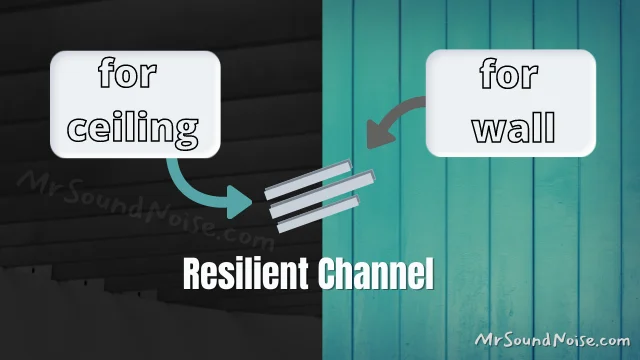
This is also a good term for the placement of these metal strips. If you have read the above writing, then I think you have also known the basic function of this channel which keeps a gap between two material surfaces.
For blocking impact noise, only a quality resilient channel is required to that place. Now, the question is what places it can be used. So I am talking about places where it is used.
To soundproof a wall more strongly, it is used. It will be better if you install it with drywall.
When sound vibrations are created in the drywall, then these channels stop that vibration from passing concrete walls to drywalls. To know more about installing this accessory on a wall, you should read this article about how to soundproof a wall.
To soundproof the ceiling section of your room more strongly, you should use these metal strips instantly. After using this accessory, then install drywall or hardboard to the ceiling section.
If you don’t know about soundproof ceilings, then you can also read this article about how to soundproof a ceiling with a few steps.
Where to Buy Resilient Channel
If you are looking to buy these metal strips, then don’t do it right now. First, you should understand the basic idea of it.
Then after knowing all things from this post, then I think you can select the right one for you.
Now, I think you can understand what I want to tell you about collecting this accessory.
Besides, you can go to the marketplace that is near your house to collect it.
If you have confidence about finding reliable metal strips, then you also can collect them from that marketplace.
Factors Need to Know Before Buying Resilient Channel
1. Resilient Channel’s Sizes and Spacing
The size of the resilient channel is not mandatory. If you need any size, then you can cut it and make it to your required size. You should maintain some distance when you install it.
The other recommendation is to softly install this metal strip with screws. Make sure that these screws don’t contact or touch the frame joists or studs (ceiling studs, wall studs, and wood transition strips)
Normally, there is a standard size of this metal strip that is based on scientific design. So you don’t need to worry about the size of it. You can cut by a tin cutter to adjust any length and size of this metal strip.
There are 24 resilient channels in the recommended box. The length of each resilient channel is 8’. After setting the 1/2″ resilient channel (metal strip), an 1/2″ gap (air pocket) is created. During the installation of these channels, You should keep space 16’’ between two resilient channels.
If the size of your room ceiling section is 64 square feet, then 6 resilient channels are needed in that space. According to the ceiling space of your room, at first, you must calculate the needed quantity of these metal strips. Then take a decision to collect these channels.
2. Decoupling Facility
Specifically, it follows scientific methods. Yes, this type of accessory follows the law of the process of decoupling method. In this method, it says that two conventional walls are adjusted by keeping some gap between those two walls. This system is called the decoupling method.
These metal strips can perform this method. By implementing this method, any impact noise can pass between these two walls.
3. Budget
If you want to stop structure-borne noise, then you should apply an acoustic decoupling method. In this situation, there needs the help of resilient channels for doing this activity. They are metal parts. So before implementing this system, check your budget plan.
More Information of Resilient Channel You May Need
Resilient Channel Ceiling Detail
Basically, these metal strips are used in the ceiling section for more insulation. Besides, to soundproof a room wall, you also need it.
First, collect these metal strips and drywall. After that add these metal strips to the ceiling frame with screws. Next, add drywall over the metal strips.
You should fix the drywall with screws. For better performance, you can create double layers or multilayers of drywall with these metal strips.
After doing this, the insulation layer will be increased in the drywall section and improve sound transmission loss in that section. For knowing more details you can read this full guideline about the soundproof ceilings.
Is Resilient Channel Worth It
The basic reason for using resilient channels is to improve poor sound insulation. According to the research and study, it is seen that there is a special design included in it for blocking sound.
This accessory can be able to remain a gap between two structure surfaces. So for this setting, it can actually block structure-borne noise that comes from other structure material sources. I think you should understand the necessity of this accessory.
Resilient Channel on Uneven Ceiling
If you are upset about the ceiling that is uneven from all the sides. Don’t worry about this. You may have a question: is it possible to install resilient channels in that uneven ceiling?
There is good news for you. In this situation, I just want to tell you that it is also possible to set up these metal strips very well in an unbalanced wall. There is also no problem with the working function of it.
When you install it to the uneven ceiling, there is a swing action created in this accessory. This is the reason why there is no problem in the drywall setting. So you can easily install it on the uneven surface of the ceiling.
Besides, when any sound comes to the gap around this metal strip, this sound floats in the air gap and some sound goes to this metal strip, then it vibrates and finally vanishes. So in this situation, there is no impact on the drywall material.
Resilient Channel Over Existing Drywall
To know about resilient channel wall detail, you should know about drywall. Do you think to install these metal strips in the existing drywall? Is that possible or not? I want to tell you that you can do some work to set it up on the existing wall of your room.
First, you should carefully open the drywall from the room wall. If you have a preparation, then it will not create complexity to open drywall from the room wall. After opening the drywall, now you should install these metal strips properly.
Finally, again you place the drywall over the resilient channel. Be sure, the position of the drywall should be perfect. After doing that, fill all the drywall joints by applying effective acoustic sealant. After that, you should finish the drywall by painting and color it according to your choice.
Resilient Bars Installation
video credit and source: Simpson Properties
You should maintain the distance of the resilient channel. First You should install a resilient bar, then you should install drywall or other hard boards (gypsum wallboard panels)
If you should maintain these rules, then you will be able to get better performance from this metal strip.
Resilient Channel with Drywall in the Ceiling Section
If you want to install these metal strips with drywall, then you will get the maximum facility for applying this setting. I have already told you before setting it with drywall.
One thing that you should remember, place these metal strips inside the drywall. For doing this setting, you need to install resilient channels first.
Then you should position drywall over those channels with acoustic sealant. In this case, you should choose a quality acoustic sealant to block the joint of drywall properly. After doing that setting, you can paint over that drywall.
When you will start to soundproof a room, you should only focus on blocking joints, holes, or cracks for sound reduction. But this is not the only way to actually soundproof a room.
You should also focus the other way too. Now, a new question you may have in your mind is, what is the other focus point? The point is about soundproof structural noise by using soundproof accessories.
After installing those accessories, then you should use proper resilient channels to stop structural noise.
After reading all these notes, now you can be able to block structural noise in your room.
My Viewpoint on Resilient Channel
In summary of this post, I just want to say that you should use these adjacent channels when you need more soundproof settings. If you want to reduce impact noise, then of course you should apply this soundproof accessory to your room ceiling and wall section.
So in the case of the resilient channel, there are also two property conditions available. Such as air level and solid level. To block any impact noise there needs to be an air gap in the drywall setting.
The resilient channel can create an air gap and easily block that noise instantly. Nowadays, most people are interested in using it.
Research shows that the use of this accessory is growing higher and higher. So my suggestion is for you to use this accessory if you really want to remove more noise that comes from structural material.
If you want to know more about it, then you should read below these questions with answers that include more learning points.
FAQ: Resilient Channel
How do I attach drywall to resilient channels?
If you read the whole post, then I guess you can tell the answer to this question. At first, you should attach those channels to the wall frame or ceiling frame for a proper installment.
After attaching these metal strips, then you need to position all drywall panels over these metal strips.
After positioning these drywall panels, fill all the gaps with an acoustic sealant like green glue sealant. This is how you can attach drywall to that channel.
Do I soundproof a room without resilient channels?
Yes, you can soundproof without using it. There are lots of soundproof accessories that you should use to soundproof a room.
For example: to soundproof a room at first you need to soundproof some essential sides of your room. These essential sides are the door, window, floor, and ceiling.
To soundproof a door, you will need acoustic sealant for filling all the gaps of the door, weather stripping for sealing the door joint, a door sweep for blocking the lower part of the door, soundproof door blanket for stopping high transmission of noise.
To soundproof a window, you will need acoustic sealant for blocking all the holes of the window, weather stripping for sealing the joint of the window, soundproof curtain to stop outside noise.
To soundproof the floor, you will need MLV for blocking structure-borne noise. To soundproof a wall, you will need acoustic foam for absorbing reflective sound, spray adhesive for attaching acoustic foam to the wall.
To soundproof the ceiling, you will need acoustic foam to absorb ceiling and room sound. To absorb all kinds of bad sound waves in the room, you will also need a white noise machine.
Above all these soundproof accessories are needed to noise-proof your area spontaneously. But if you want a more soundproof area, then you will of course need this channel of the metal strip for getting the high performance.
Can You Remove Resilient Channels When Necessary?
Removing the resilient channel is not mandatory because it stays for a longer time. If you really want to remove it, then you must do some work.
First, you should remove the acoustic sealant of the drywall. After removing acoustic sealant, you should remove drywall from the wall or ceiling side.
After removing drywall, now you can uninstall this channel. Normally there is no need to uninstall this accessory. So you don’t need to worry about uninstallation of it.
Is Resilient Channel Fire Proof?
This strip is made from metal. This is the reason why fire can’t do any harm to it. You should keep alert about other soundproof accessories like acoustic foam. It is not fireproof.
Does the Screwdriver Need to Install a Resilient Channel?
Of course, a screwdriver is needed to install it. You can use the required screw flanges in that metal strip for the actual installation.
You should not tighten any screw when you start to attach it to the ceiling frame or wall frame.
Do Resilient Channels Serve Us in Bad Weather Conditions?
Actually, any weather condition can’t do any harm to this type of channel. Because it is made from metal elements. This is the reason why you don’t need to worry about weather conditions.
Can I Install this Resilient Channel without the Help of Others?
This will be tougher if you start to install it alone. Besides, there needs more time, if you decide to install these soundproof accessories alone.
It will be best if you take the help of others. You can take help from your known person when you will start to install this accessory.
It will be more good for you if you hire a professional person for installing these metal strips on the room ceiling and room wall. If you are a professional at installing soundproof accessories, then you can start to install this by yourself.

![How to Soundproof a Ceiling in Apartment and Condo [5 Tips] soundproofing a ceiling in an apartment and condo](https://mrsoundnoise.com/wp-content/uploads/2021/10/soundproofing-ceiling.webp)

